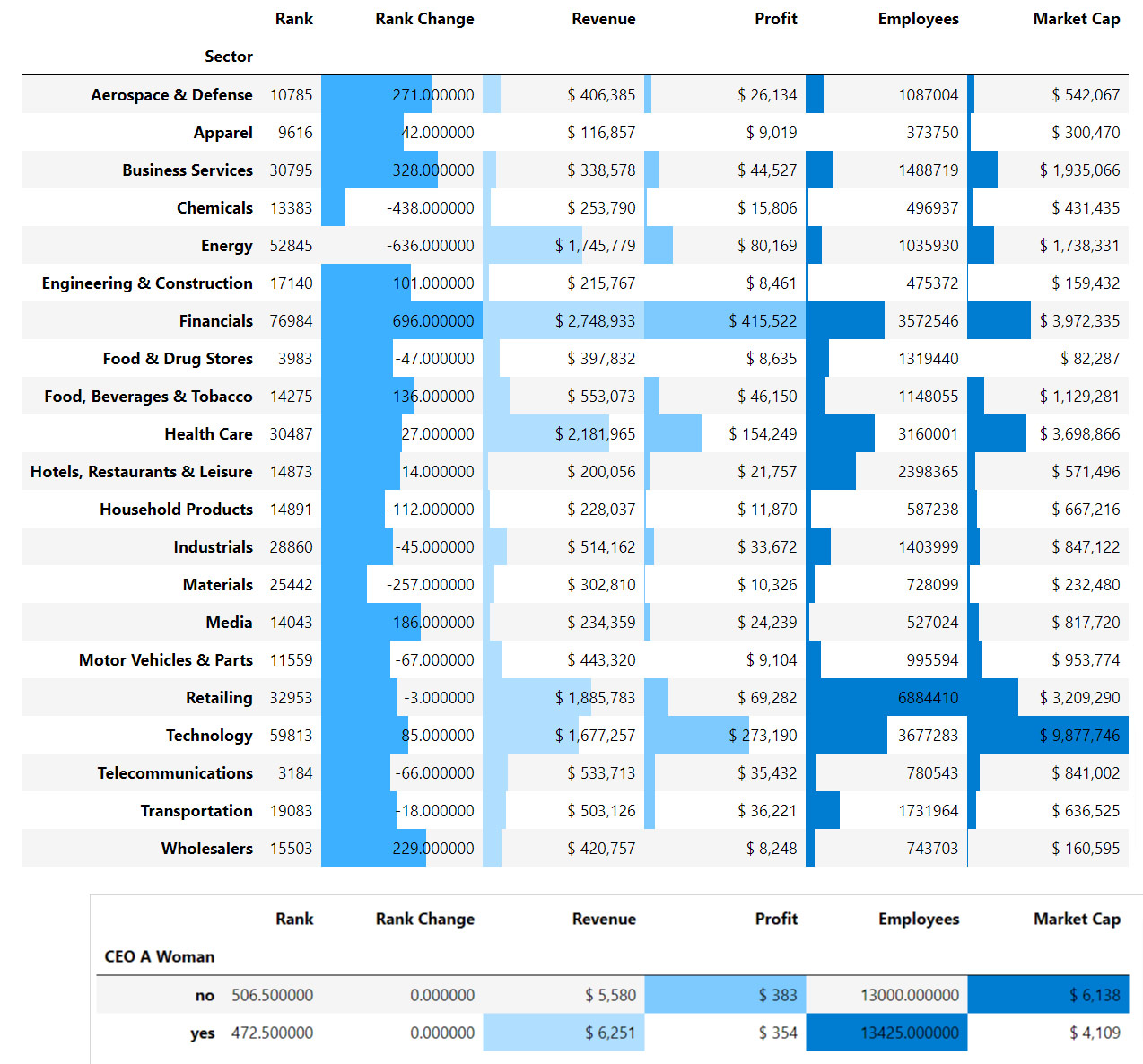
Who Strived, Survived, or Struggled in 2020?
Who Strived, Survived, or Struggled in 2020? by Market Action Research
(Last Modified: March 25, 2021, 10:10 p.m.)
It’s hard to believe it’s already been a whole year since many places across the country went into “lock down” mode due to the spread of a global Covid-19 pandemic. Many businesses were initially shuttered, but as businesses learned how to adapt and continue to conduct business, some businesses thrived while others continued to struggle more. Every year Fortune magazine publishes the “Fortune 500”, which ranks the top 500 companies in the United States by revenue. In the following research analysis, we included the entire Fortune 1000, which is the top 1000 companies by revenue.
Ranks are shown as of the year 2021, whereas the rank change denotes any change from the January 20th, 2020 to the January 20th 2021. Revenue, profit, and market cap are in the millions. Some of the rows have empty values because those companies are private.
Which Industries Strived or Struggled in 2020?
2020 was undoubtedly one of the most trying and challenging years that many businesses had ever faced. Many industries had to completely and entirely change the way they did business due to restrictions or public health concerns. Some industry sectors however saw significant sum in gains. The chemicals, energy, and materials sectors were among some of the hardest hit by the pandemic, with household products, motor vehicles and parts, and telecommunications industry sinking a bit from their pre-pandemic highs. On the flip side industry sectors in financials, wholesalers, businesses services, aerospace and defense, food and beverages, and engineering and construction saw explosive growth in 2020, with apparel, technology, and healthcare seeing some notable gains as well.
Women Led Companies
In the year 2021, very few of the Fortune 1000 companies have a women as CEOs. In fact, only 68 of the Fortune 1000 companies have women as the CEOs, which is just shy of 7%. Clearly, women are largely under-represented at the highest level of leadership in high-revenue corporations, especially considering the entire United States women’s population is presently estimated at around 51% of the total population. However, the few CEOs that are women in Fortune 1000 companies actually performed better on average when it came to overall revenue, beating other male led companies on average by $671 million and doing it while supporting on average 425 more employees too.

Not All States Impacted Equally
In general some States attract different types of corporations for various reasons, ranging from climate, terrain, natural resources, taxes, and many other factors. During 2020, many States were also disproportionately impacted likely due to the types of industries their States attract, and how industry sectors were also affected in different ways. States that experienced the highest sum of rank increases included Florida, Illinois, Massachusetts, New York, Wisconsin, Virginia, Rhode Island, and California. In contrast, States such as Texas, Oklahoma, Pennsylvania, Georgia, Delaware, and Indiana saw the highest sum of rank decreases. See chart at the bottom.
What’s Next?
Nobody has a crystal ball of what the future might hold, but with what seems to be finally a glimmer of light and hope at the end of the pandemic, many businesses will undoubtedly be looking to ramp up their business efforts. Of course, we all hope many things to change and even return to at least a normal-like state for many businesses in the short-term. Some businesses however are finding that there actually has been a silver lining in what was perhaps been the worst year ever. Some business are even finding ways to incorporate more technologies into their daily and physical work-life routines to create safer, more effective, and efficient operations.
In a study we conducted in early 2020, called Web Development Services & the State of E-Commerce, we looked at how businesses were impacted by the pandemic. To our surprise, we found that many businesses that were prepared with functional websites, e-commerce, and other web based experiences actually gave them a competitive advantage, because they were able to continue business operations online. Additionally, many of those businesses actually saw an increase in sales and revenues within a few short months after shuttering their physical doors. One of the key benefits of a website is that it can keep your business open virtually 24 hours and day, 7 days a week, and even works on holidays too.
Not every industry was ready, but some businesses discovered that the down-time gave them a chance to reimagine their business and create new opportunities to engage, connect, and grow their customer base online. Although this was not the case for every business, the new patterns of consumers’ online purchase behavior is not only very likely here to stay, but likely to experience continuous growth in the coming years due to multiple factors, such as more people of all generations gaining familiarity and comfort in online purchases, the globalization of e-commerce, improvements to logistical systems, any potentially the increasingly popularity of digital assets like Cryptocurrencies such as Bitcoin or Ethereum. Either way, we are all hoping for a better tomorrow, and are looking forward to examining the progress as this year progresses and then sharing that with you.
Interested in seeing more research reports? Register for our newsletter near the bottom of the page for free periodic market research reports.

Originally Published: March 25, 2021, 10:07 p.m.

